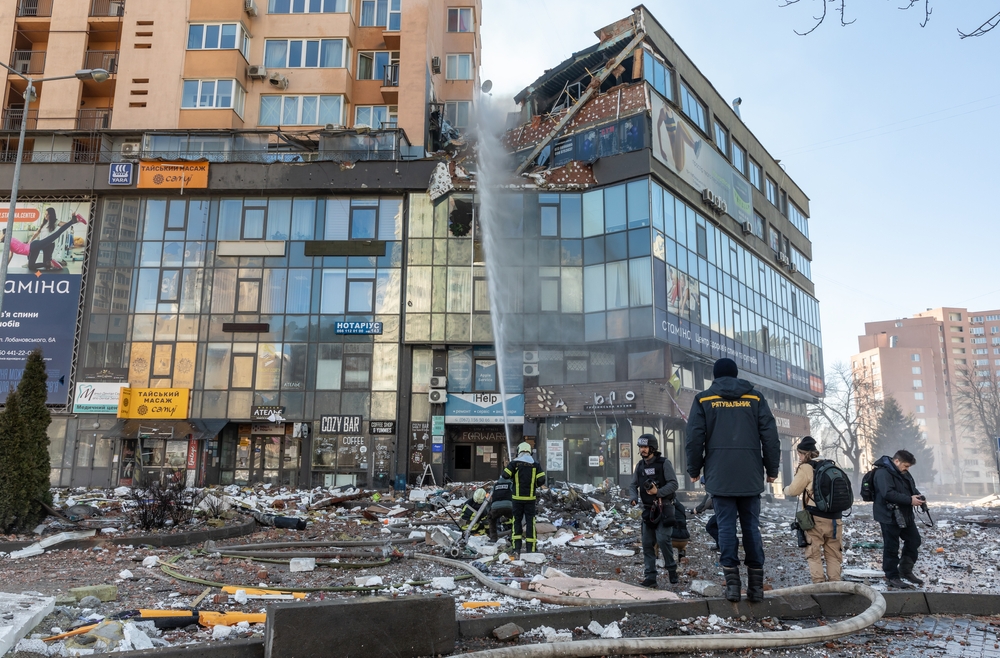Russia launched a massive combined attack on Kyiv early Friday, killing four and injuring 27, Mayor Vitali Klitschko said. Fires ignited across multiple districts, and rescue crews struggled to reach two victims trapped under rubble. Emergency teams treated 27 people for injuries, including two children aged seven and ten. Ukrainian President Volodymyr Zelenskyy condemned the assault, calling it a “deliberately calculated attack targeting civilians and infrastructure.” He reported that Russia fired 430 drones and 18 ballistic and aeroballistic missiles during the strike.
The bombardment damaged at least 11 multi-storey residential buildings, and falling debris sparked fires near a medical facility and inside a commercial property. Nine people, including a pregnant woman, required hospitalisation. Officials warned residents to remain in shelters until the air raid alert lifted and cautioned about potential power and water outages. Authorities continue to gather information about casualties and structural damage across the city.
Regional Damage and Civilian Impact
Russian forces also struck surrounding areas, damaging critical infrastructure and private homes. Regional head Mykola Kalashnyk reported at least six injuries outside Kyiv, including a 55-year-old man in Bila Tserkva who suffered thermal burns and required hospitalisation. Ukraine’s Air Force confirmed additional attacks across the country, extending the threat beyond the capital. Residents across multiple regions faced disrupted daily life, property damage, and safety concerns as officials coordinated emergency responses.
Ukraine Pushes Back Amid Southern Losses
The strikes coincided with Russian gains in southern Ukraine. Ukrainian troops withdrew from several villages in Zaporizhzhia after intense clashes. Over the past four weeks, Russia claimed nine settlements in Donetsk, eight in Zaporizhzhia, seven in Dnipropetrovsk, and five in Kharkiv. Despite capturing territory, Russia suffered heavy casualties and equipment losses. Analysts from the Institute for the Study of War noted Russia’s siege of Pokrovsk remains slow-moving. Commanders spread elite drone operators and special forces across multiple fronts, limiting their progress. Ukraine continues to hold its defensive lines, inflicting incremental battlefield setbacks while resisting broader Russian advances.
The attacks highlight Russia’s ongoing strategy of attrition and Ukraine’s struggle to protect civilians and maintain control in contested areas. Emergency services and authorities continue to respond under high pressure, prioritising civilian safety and infrastructure protection.


